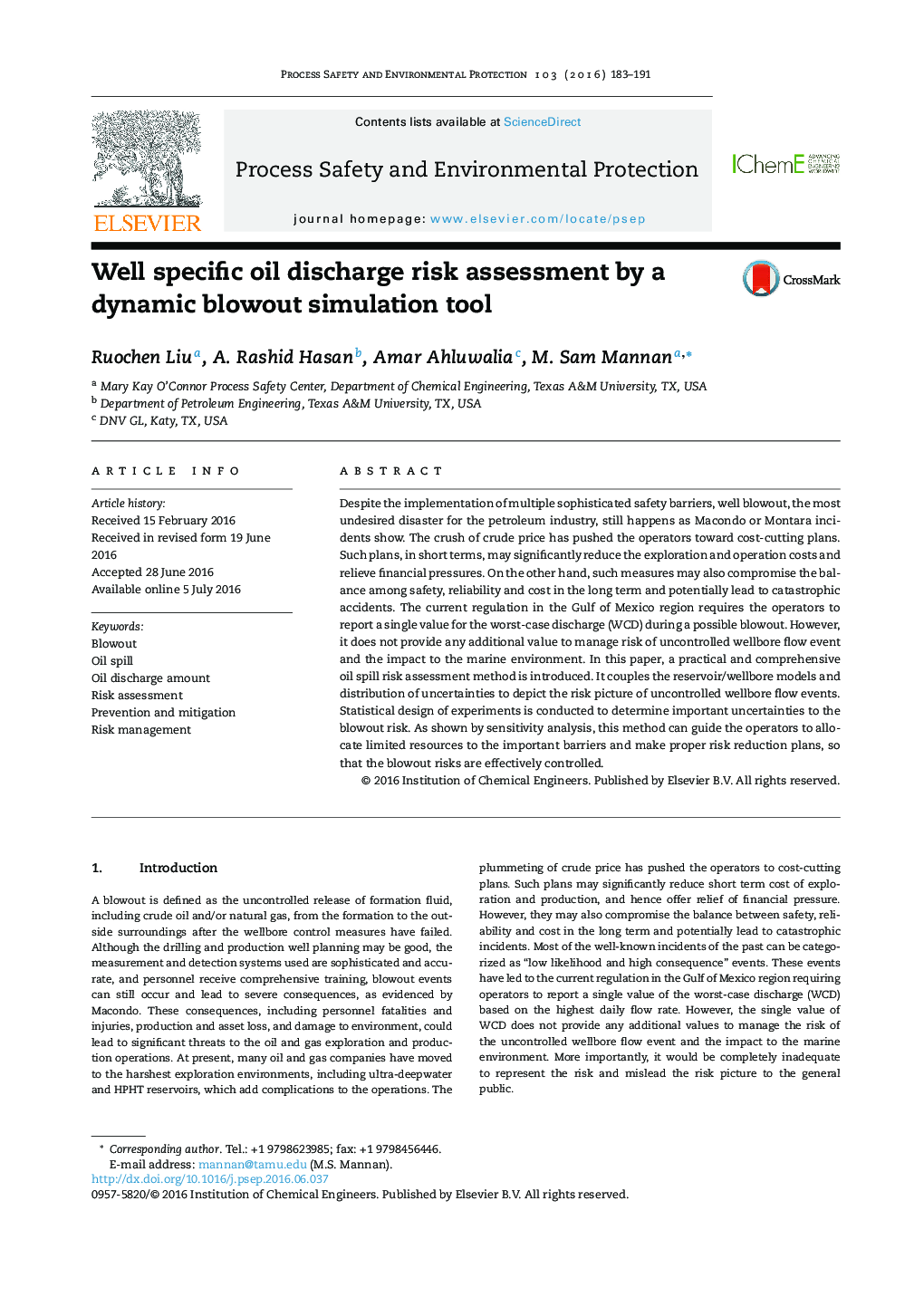| Article ID | Journal | Published Year | Pages | File Type |
|---|---|---|---|---|
| 4980910 | Process Safety and Environmental Protection | 2016 | 9 Pages |
Abstract
Despite the implementation of multiple sophisticated safety barriers, well blowout, the most undesired disaster for the petroleum industry, still happens as Macondo or Montara incidents show. The crush of crude price has pushed the operators toward cost-cutting plans. Such plans, in short terms, may significantly reduce the exploration and operation costs and relieve financial pressures. On the other hand, such measures may also compromise the balance among safety, reliability and cost in the long term and potentially lead to catastrophic accidents. The current regulation in the Gulf of Mexico region requires the operators to report a single value for the worst-case discharge (WCD) during a possible blowout. However, it does not provide any additional value to manage risk of uncontrolled wellbore flow event and the impact to the marine environment. In this paper, a practical and comprehensive oil spill risk assessment method is introduced. It couples the reservoir/wellbore models and distribution of uncertainties to depict the risk picture of uncontrolled wellbore flow events. Statistical design of experiments is conducted to determine important uncertainties to the blowout risk. As shown by sensitivity analysis, this method can guide the operators to allocate limited resources to the important barriers and make proper risk reduction plans, so that the blowout risks are effectively controlled.
Related Topics
Physical Sciences and Engineering
Chemical Engineering
Chemical Health and Safety
Authors
Ruochen Liu, A. Rashid Hasan, Amar Ahluwalia, M. Sam Mannan,
